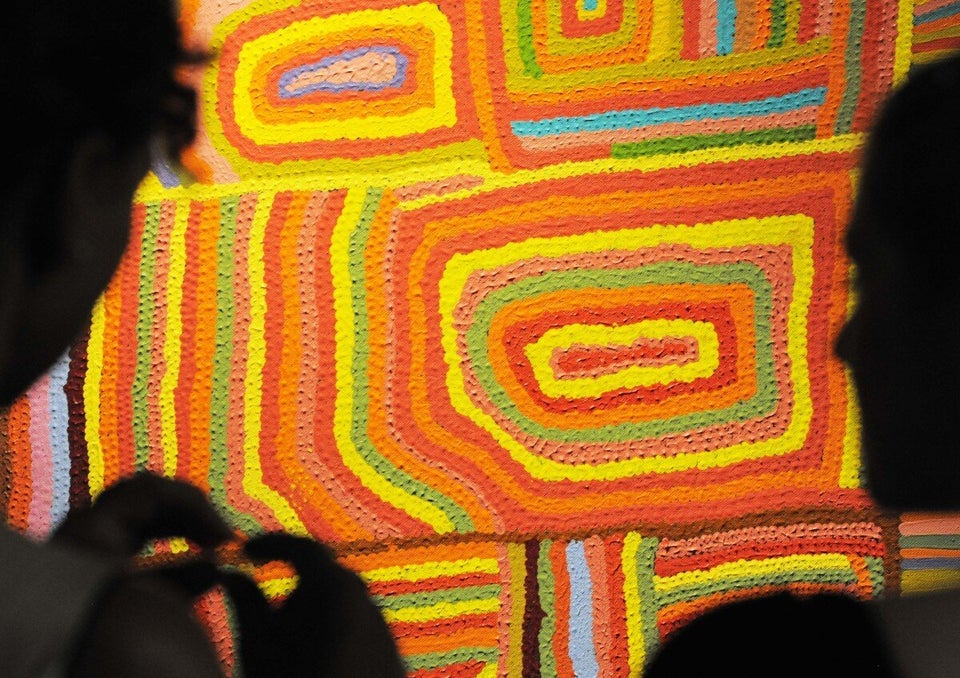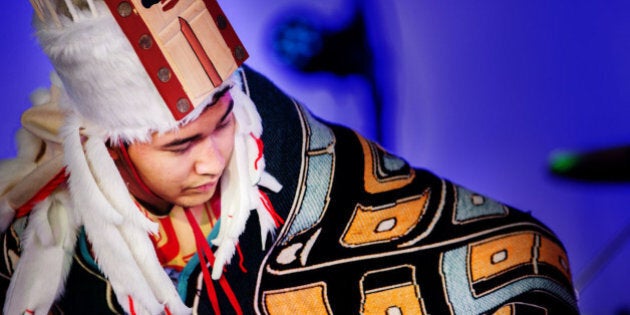
The 2015 Pan Am/Parapan Am Games in Toronto involved more than sports. There was also plenty of art and culture featured too.
The Dakhká Khwáan Dancers travelled 5,000 kilometres from Whitehorse to perform onstage at the Aboriginal Pavilion, as part of the 17-day Indigenous arts, culture and sports festival that ran parallel to the Pan Am Games. The group is a traditional Inland Tlingit dance and drumming group based in the Yukon. They performed at the 2010 Olympics in Vancouver and just recently won a national tourism award.
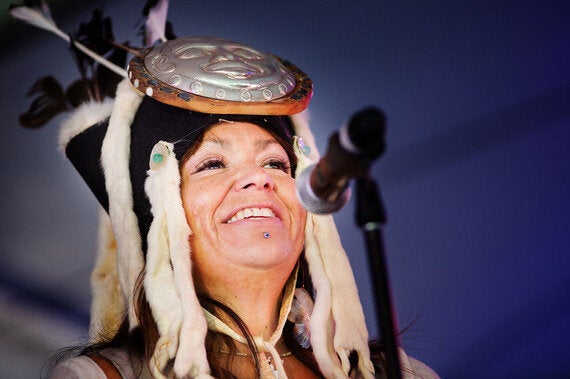
(Above: Marilyn Jensen from Dakhká Khwáan Dancers. Photo by Ryan Edwardson Photography)
"We are really honoured to be here," says Marilyn Jensen, group leader for the Dakhká Khwáan Dancers. "We are representing our nations, our families, our clans, and our communities back in the Yukon."
The group performed at the Opening Night Showcase, followed by full length shows captured on video. Panamania aside, spectators can normally expect a lively performance of traditional dancing, singing, drumming, and storytelling at any Dakhká Khwáan show, sometimes with audience interaction ("we get them dancing!"). As Jensen says, she hopes that audience will leave feeling inspired and entertained, as well as with a greater "awareness of who we are, as indigenous people and as Yukon First Nations."
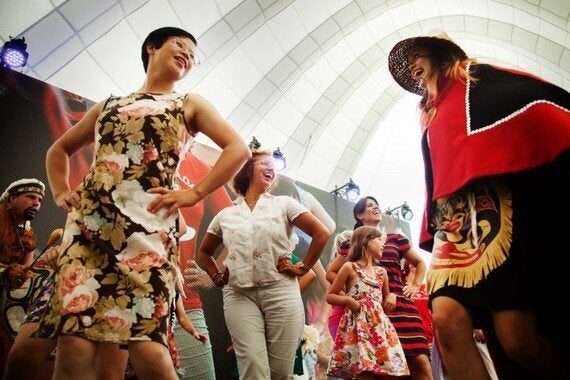
(Photo: Ryan Edwardson Photography)
"We tell stories through our songs and interpret the legends," Jensen says. "We've newly introduced mask dancing, which is something that our ancestors did a long time ago."
During performances, the dancers wear handmade regalia and colourful masks depicting significant figures that appear in traditional tales such as raven, eagle, wolf, killer whale and seal.

(Photo: Yyan Edwardson Photography)
"Raven is really integral to our stories," says Jensen. "He was responsible for the creation of the world. He's a very noble character, but at the same time, he's a trickster. You'll see that we have Eagle -- he is very regal and always the responsible one."
Wearing full regalia, the group dances across the stage, acting out legends and stories that have been passed down throughout generations.
"Expect a high energy, loud and proud performance," says lead drummer, Gary Johnson. "When you're singing traditional songs, you're sharing your stories, and it can't help but be a little bit personal. You're sharing yourself and your soul. "
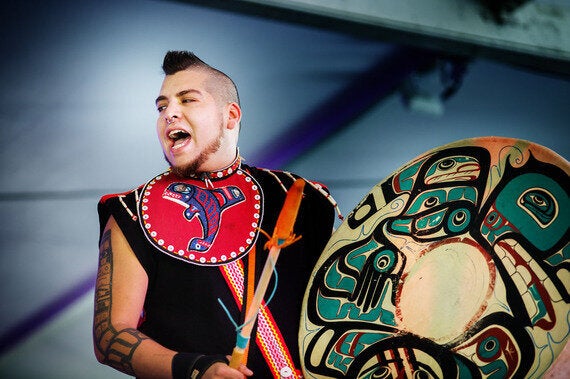
(Above: Gary Johnson, lead drummer. Photo: Ryan Edwardson Photography)
Since forming in 2007, the group has grown from six to 25 members representing the Inland Tlingit communities: Carcross/Tagish First Nation, Teslin Tlingit Council, Taku River Tlingit, Kluane First Nation and the Kwanlin Dun First Nation. Hence the group's name, which translates as "Inland Nation Dancers."
"The name was given to us by an elder from Teslin," says Jensen. "We were trying to find a traditional name for our group. She told us: 'You guys come from many different villages in the Inland. Dakhka means 'inland interior' and Khwaan means 'nation or village.' So that's our name."

(Photo: Ryan Edwardson Photography)
Recently, the group has expanded to include a children's dancing group, so kids can have fun and learn about their culture.
"A part of our responsibility is to teach the other generation and pass it on," Jensen says.

(Photo: Ryan Edwardson Photography)
Post-Panamania, the Dakhká Khwáan Dancers are headed back home to perform at Folk on the Rocks in Yellowknife and the Hà Kus Teyea Celebration in Teslin. Watch their Facebook page for upcoming shows; but of course, catching a performance by the group may require travelling to the Yukon, which Jensen jokingly warns can be "dangerous" because so many tourists end up staying permanently.
"The Yukon captures your soul," she says. "It's so beautiful and it's so wild. It's very peaceful and quiet, and the people are wonderful and beautiful. Our First Nations are very strong in the Yukon territory and also very welcoming. If you come visit in the Yukon, you're going to love it."
The original article appeared on Eat Drink Travel Magazine. For more ideas and inspiration, read about our past adventures in the Yukon.
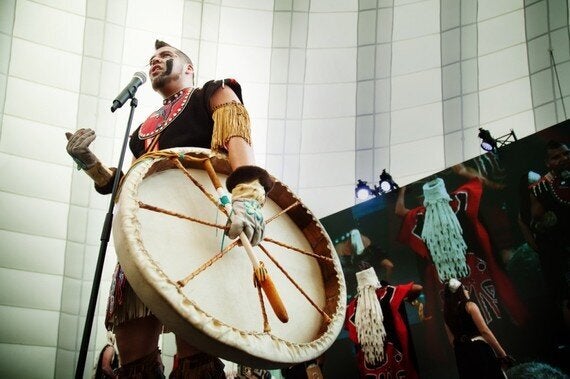
(Photo: Ryan Edwardson Photography)
MORE ON HUFFPOST:
